The flag of Senegal, adopted after its independence, symbolizes the nation’s journey and enduring spirit. More than a mere representation of territorial boundaries, this emblem captures the essence of Senegalese culture and its forward-looking vision.
Flag of Senegal
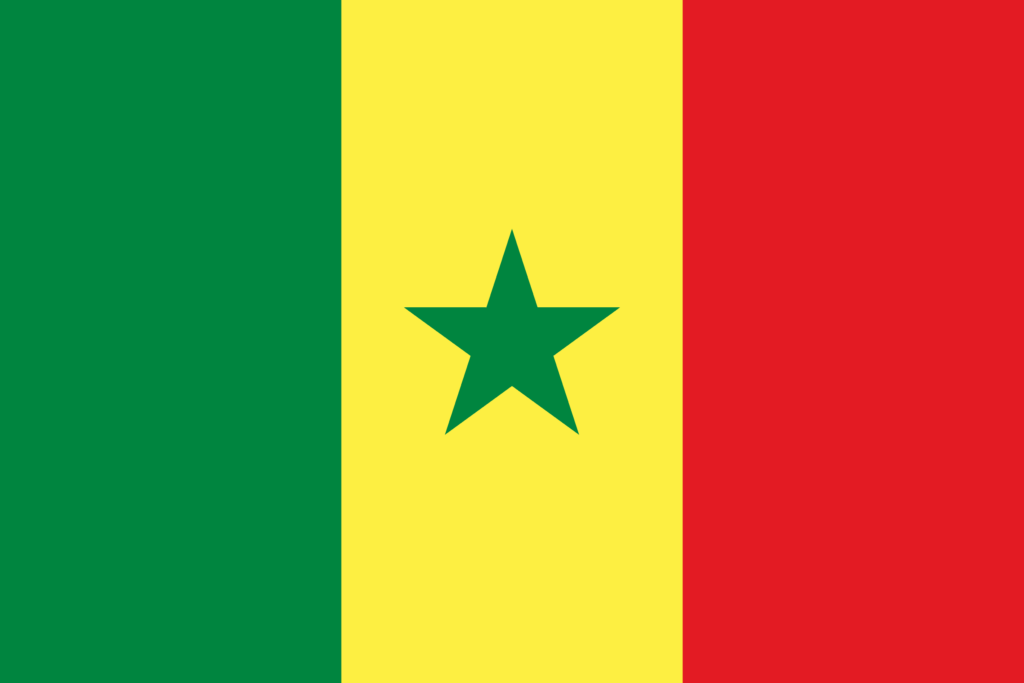
Senegal’s flag features a tricolor design of green, yellow, and red vertical bands, with a green star centered in the yellow band. This design is a vivid representation of the nation’s landscape and symbolizes hope, sacrifice, and prosperity.
The green star, a universally recognized symbol of Islam, reflects the country’s major religion and guiding principles. This flag, with its simple yet meaningful design, is a representation of Senegal’s national identity and its aspirations.
Flag of Senegal: Color Palette
Senegal Flag Map
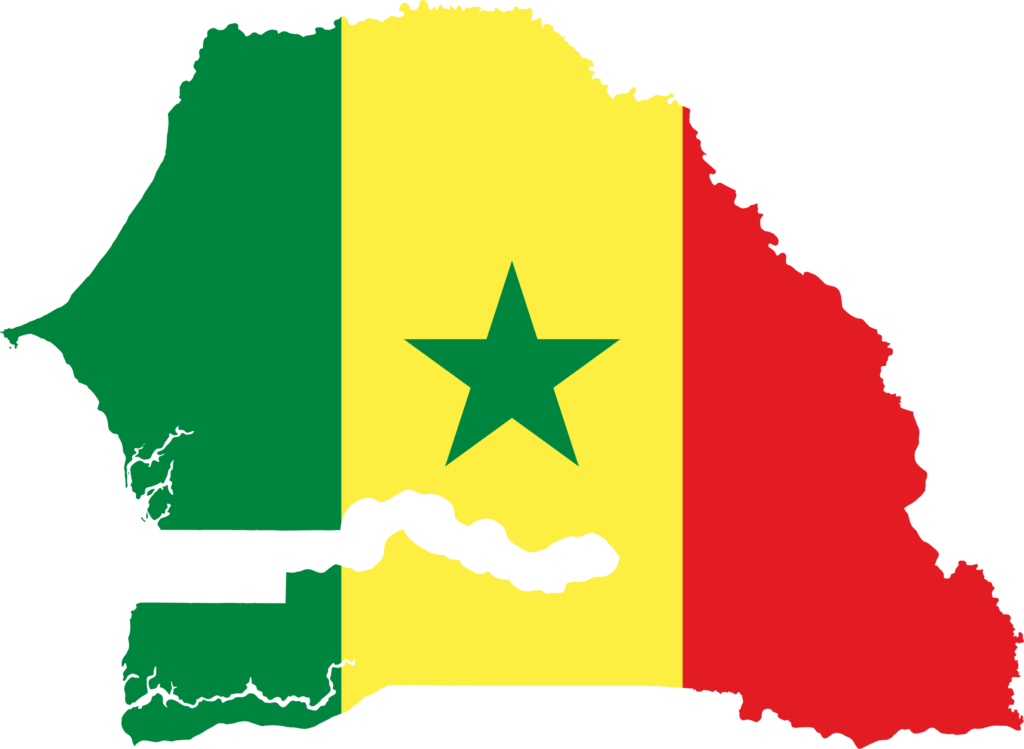
The color palette of Senegal’s flag is a harmonious blend of three distinct hues, each chosen for its deep cultural and symbolic relevance. This trio of colors forms the visual cornerstone of the flag, setting the stage for a more detailed exploration of their meanings and significance in the following segment.
Meaning of Each Color
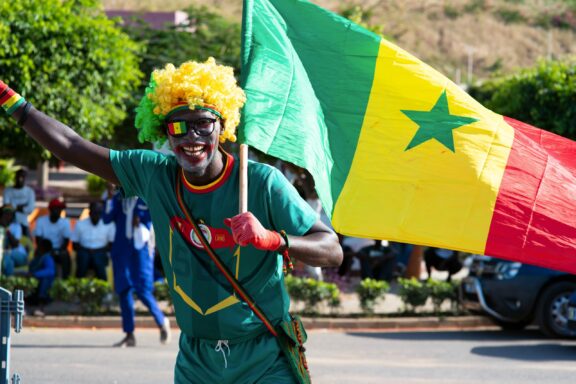
Green
Green is a color of great significance in Senegal, deeply rooted in the country’s primary religions. For the majority Muslim population, green represents the color of the Prophet, symbolizing Islam’s profound influence on the nation’s culture and spiritual life.
Christians in Senegal view green as a symbol of hope, while Animists see it as representing fecundity, reflecting the nation’s rich agricultural heritage and connection to the earth.
In the flag, green embodies these religious and cultural meanings while also symbolizing the lush vegetation and agricultural potential of Senegal.
Yellow
Yellow in Senegal’s flag is a multifaceted symbol. It represents the country’s wealth, emphasizing its economic ambitions and potential. This color also resonates with the arts, literature, and intellect fields, highlighted by the tradition of literature teachers wearing yellow blouses in Senegal.
Yellow on the flag symbolizes the nation’s focus on economic progress and cultural development, reflecting its aspirations for a prosperous and intellectually vibrant society.
Red
Red in the flag of Senegal carries a profound historical weight. It recalls the color of blood, symbolizing the life and sacrifices made by the nation in its struggle for independence.
This color speaks to the determination of Senegal to fight against underdevelopment and to honor the sacrifices of its people for freedom and progress.
On the flag, red reminds the nation of its resilience and unyielding spirit in its path toward development and self-determination.
Senegal’s Coat of Arms
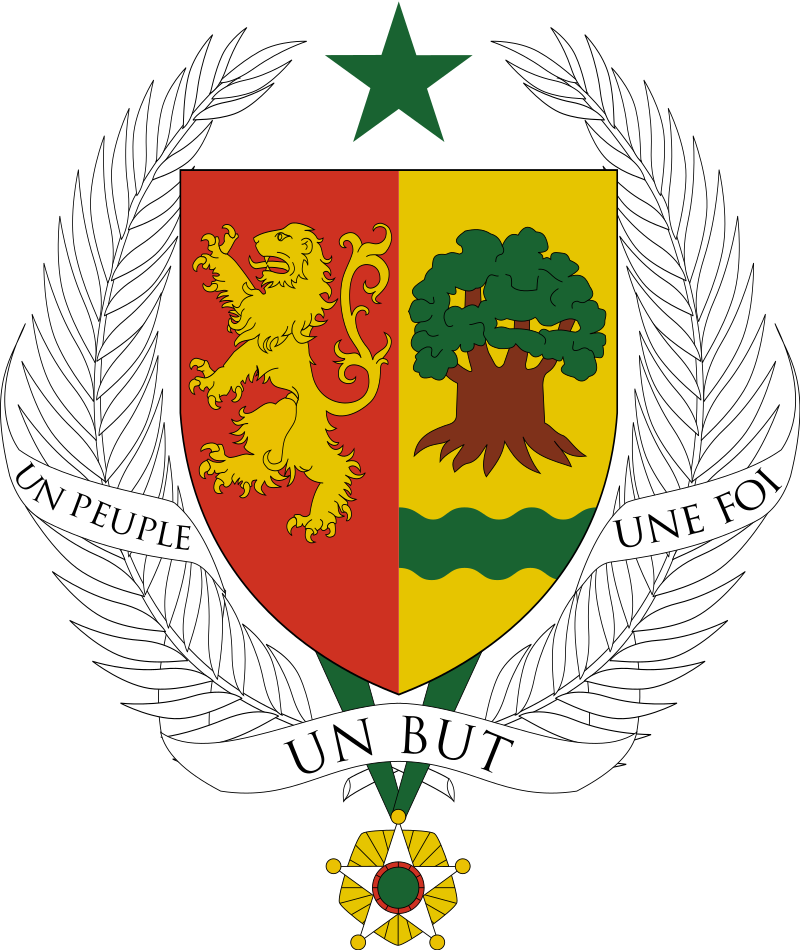
Senegal’s Coat of Arms, adopted in 1965, presents a rich tapestry of symbols representing the nation’s identity and heritage:
- Shield: The shield is divided into two halves.
- Left Side (Dexter): Features a lion, a national symbol of Senegal, representing strength and the northern Senegalese ethnic groups. Historically, the lion symbolized power for kings before French colonization.
- Right Side (Sinister): Displays a baobab tree native to Senegal. Beneath the tree is a wavy green line representing the Senegal River.
- Green Star: At the top of the shield, a five-pointed green star symbolizes hope, a common element in African heraldry.
- Palm Branches: Flanking the shield are palm branches.
- Motto: The country’s motto is “One People, One Goal, One Faith” (French: Un Peuple, Un But, Une Foi), reflecting a unified national vision and aspiration.
The Coat of Arms thus incorporates elements that are significant to Senegal’s cultural and natural heritage that collectively encapsulate the spirit of the Senegalese nation, its diverse ethnic composition, and its rich natural environment.
Historical Evolution and the Meaning Behind Changes
The flag of Senegal has undergone several changes over time, each reflecting significant shifts in the nation’s political and cultural landscape.
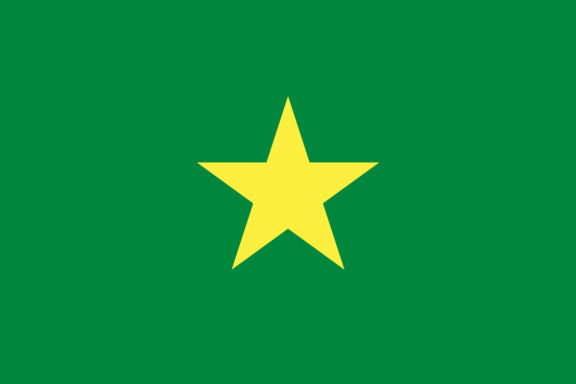
Before Senegal’s independence, the flag was influenced by French colonial presence. During this period, the flag predominantly featured the French Tricolor, indicating Senegal’s status as a French colony.
In 1959, Senegal joined the Mali Federation, and the flag adopted for this federation featured a vertical tricolor of green, yellow, and red with a stylized human figure in the middle. This design was a departure from the colonial flag, symbolizing a move towards independence and African unity.
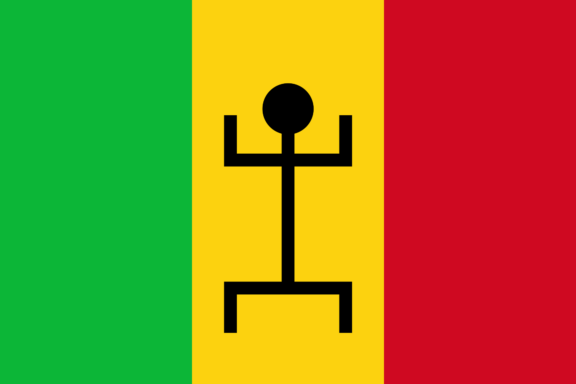
After the dissolution of the Mali Federation in 1960, Senegal became an independent republic and adopted its flag. The current flag design was introduced, featuring the same green, yellow, and red vertical stripes without the human figure.
These changes in the flag of Senegal reflect the country’s history from being a French colony to an independent nation, along with its evolving character and aspirations.
The current flag, with its Pan-African colors, symbolizes national pride and Senegal’s solidarity with other African nations.
Overall Symbolic Meaning of the Flag
The flag of Senegal symbolizes the nation’s journey toward unity, progress, and resilience. It reflects the country’s historical struggles, cultural richness, and aspirations for a prosperous future. As a representation of national identity, the flag encapsulates the spirit of the Senegalese people and their collective vision for the nation.
Similar Flags to the Flag of Senegal
The flag of Senegal shares similarities with several other national flags, mainly due to common historical influences and cultural exchanges:
Mali
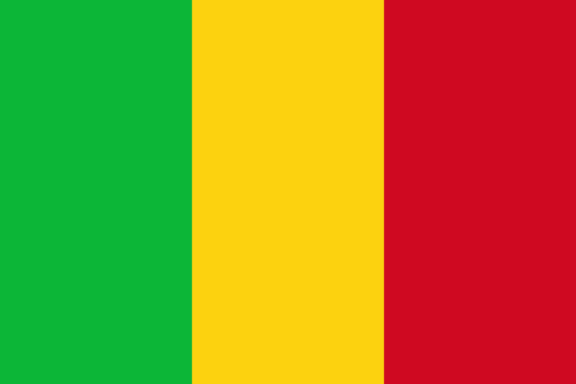
Mali’s flag has the same colors as Senegal’s flag but in vertical stripes. The similarity stems from both countries being part of the short-lived Mali Federation. The use of these colors reflects their common cultural and historical ties and their joint commitment to Pan-Africanism.
Beyond the Mali Federation’s historical context, the resemblance between Mali and Senegal’s flags also symbolizes the geographical and cultural proximity of the two West African nations.
Guinea
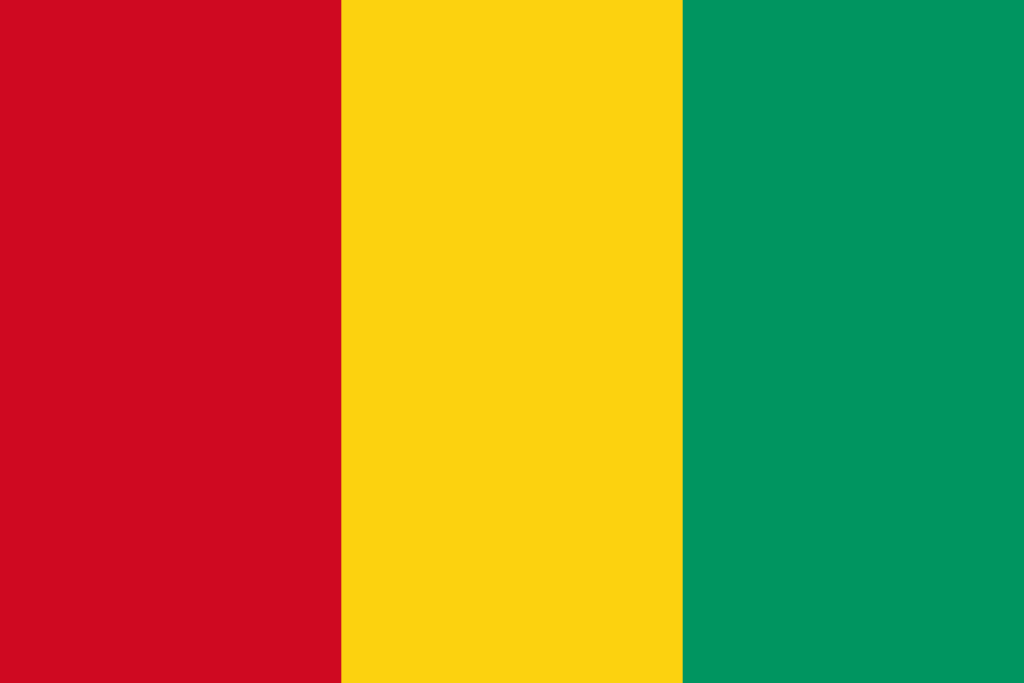
The resemblance between the flags of Senegal and Guinea reflects their mutual participation in the Pan-African movement. Both countries adopted the Pan-African colors following their independence to signify unity and solidarity among African nations.
The adoption of the Pan-African colors by Guinea, similar to Senegal, also marked its emergence from colonial rule and a step towards asserting its national identity.
Ghana
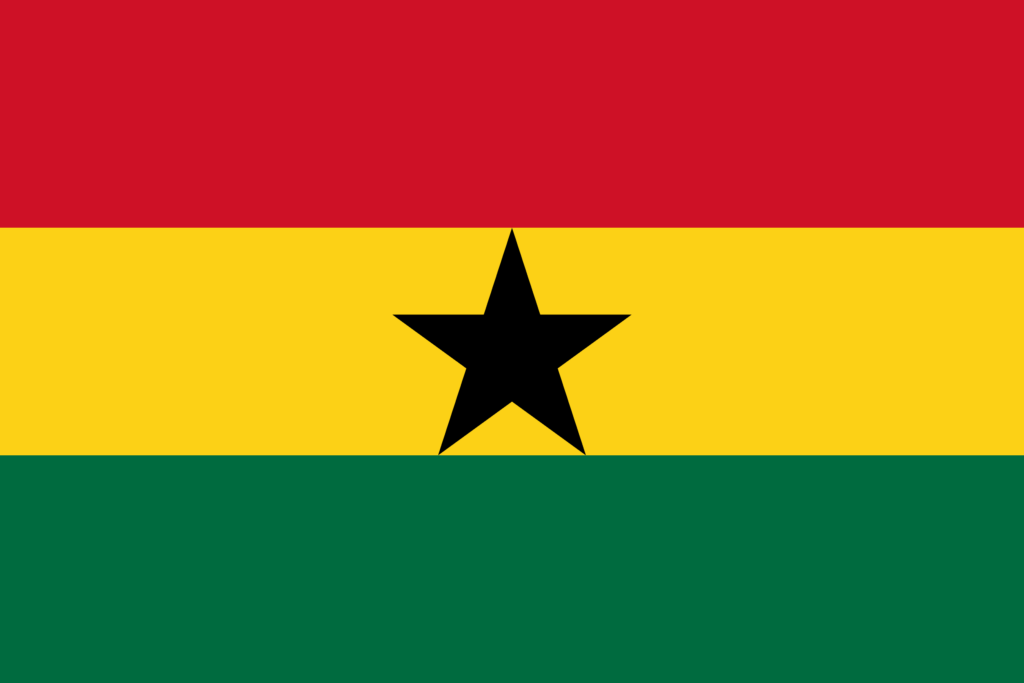
While Ghana’s flag has different symbols and uses black instead of green, it shares the red, yellow, and green color scheme. This resemblance is due to the Pan-African influence, with the colors symbolizing African unity and solidarity.
Ghana’s flag was the first to be adopted by a sub-Saharan African country gaining independence. This adoption paved the way for other African countries, including Senegal, to embrace these colors in their flags, further strengthening the bond of unity and shared destiny.
Final Thoughts
The flag of Senegal embodies a rich tapestry of meanings, reflecting the nation’s history, cultural diversity, and aspirations. In the global community of flags, it stands as a symbol of unity and progress, instilling a sense of national pride and identity among Senegalese citizens.
Image Sources and Copyright Information
- Person Celebrating with Senegal Flag: © Pierre Laborde/Shutterstock